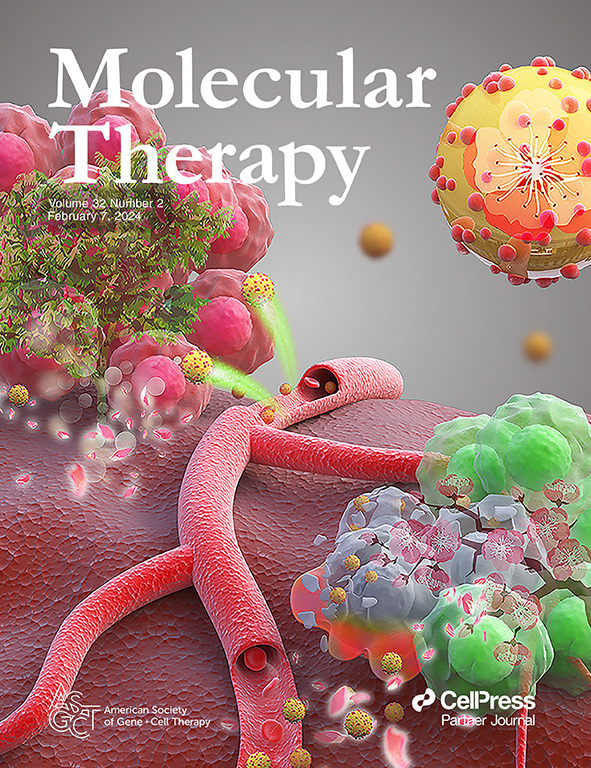RNA肌苷传感器引导的TadA突变扫描对腺嘌呤碱基编辑器的毒性最小化。
IF 12
1区 医学
Q1 BIOTECHNOLOGY & APPLIED MICROBIOLOGY
引用次数: 0
摘要
腺嘌呤碱基编辑器(ABEs)的TadA成分诱导了广泛的RNA脱靶编辑,并引起了其应用的安全性问题。然而,RNA编辑相关毒性的程度仍然难以捉摸,专注于RNA编辑活性的abe的高通量工程仍然具有挑战性。在这里,我们证明了经典ABEs的RNA脱靶编辑在体外和体内都会导致实质性的毒性。然后,我们设计了一种快速,经济高效且敏感的荧光RNA肌苷传感器,以加速RNA脱靶编辑评估和哺乳动物细胞中的高通量筛选。利用RNA传感器进行深度突变扫描,鉴定出各种显示RNA编辑活性最低的TadA8e突变体,其中具有代表性的H52L/D53R突变体与SpCas9和紧凑的IscB缺口酶兼容。我们表明,经过工程修饰的ABEs可以在体外和体内以更高的精度有效地靶向临床相关位点,从而为仔细评估和最小化rna编辑相关毒性的应用提供了有前途的工具。本文章由计算机程序翻译,如有差异,请以英文原文为准。
RNA Inosine Sensor-Guided TadA Mutational Scanning for Toxicity Minimization of Adenine Base Editors.
The TadA component of adenine base editors (ABEs) induces widespread RNA off-target edits and raises safety concerns for their applications. However, the extent of RNA-editing-related toxicity remains elusive, and high-throughput engineering of ABEs focusing on RNA editing activities remains challenging. Here we demonstrate that RNA off-target editing of classical ABEs leads to substantial toxicity in vitro and in vivo. We then design a rapid, cost-effective and sensitive fluorescent RNA inosine sensor to accelerate RNA off-target editing evaluation and high-throughput screening in mammalian cells. Deep mutation scanning with the RNA sensor identifies various TadA8e mutants displaying minimized RNA editing activity, with the representative H52L/D53R mutant compatible with both SpCas9 and the compact IscB nickase. We show that the engineered ABEs could efficiently target clinically relevant sites in vitro and in vivo with enhanced precision, thereby providing promising tools for applications in which RNA-editing-related toxicity should be carefully evaluated and minimized.
求助全文
通过发布文献求助,成功后即可免费获取论文全文。
去求助
来源期刊

Molecular Therapy
医学-生物工程与应用微生物
CiteScore
19.20
自引率
3.20%
发文量
357
审稿时长
3 months
期刊介绍:
Molecular Therapy is the leading journal for research in gene transfer, vector development, stem cell manipulation, and therapeutic interventions. It covers a broad spectrum of topics including genetic and acquired disease correction, vaccine development, pre-clinical validation, safety/efficacy studies, and clinical trials. With a focus on advancing genetics, medicine, and biotechnology, Molecular Therapy publishes peer-reviewed research, reviews, and commentaries to showcase the latest advancements in the field. With an impressive impact factor of 12.4 in 2022, it continues to attract top-tier contributions.
 求助内容:
求助内容: 应助结果提醒方式:
应助结果提醒方式:


